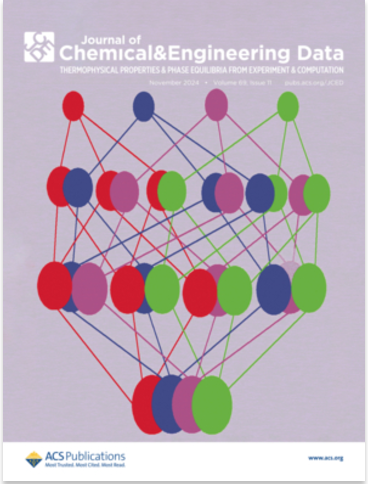PASS-01 试验的早期结果:胰腺癌特征分层治疗-01。
IF 2.1
3区 工程技术
Q3 CHEMISTRY, MULTIDISCIPLINARY
Journal of Chemical & Engineering Data
Pub Date : 2024-06-10
DOI:10.1200/jco.2024.42.17_suppl.lba4004
引用次数: 1
摘要
LBA4004 背景:60%以上的胰腺导管腺癌(PDAC)患者会出现转移性疾病。改良 FOLFIRINOX (mFFX) 和吉西他滨/纳布紫杉醇 (GnP) 都是晚期 PDAC 的一线选择,但尚未在北美患者中进行前瞻性比较。此外,还缺乏指导选择的生物标志物。基底样亚型和经典亚型可预测预后,但其预测影响尚不清楚。患者衍生器官组织(PDOs)现在可以用于药物药理分型研究。利用附加的 PDO 药物敏感性进行快速的分子谱分析可使 PDAC 患者做出更好的精准选择。方法:PASS-01是一项多中心随机II期试验,评估ECOG PS为0-1的新发转移性PDAC患者(不包括种系BRCA1/2、PALB2)一线mFFX与GnP的益处,这些患者已进行基线肿瘤活检(bx),以进行全基因组/转录测序(WGTS)和PDO生成/药物分型,并使用标准药物和新型药物。主要终点是mFFX与GnP的PFS(按方案(PP)至少接受1次指定化疗),136名患者需要达到80%的功率,才能在双侧检验中发现mFFX与GnP的中位PFS差异为7个月与5个月,显著性水平为0.3。次要终点包括ORR、SAEs、OS、RNA特征和GATA6表达对结果的影响。每位患者在接受第 1 次 8 周 CT 后,都会立即在分子肿瘤委员会上进行讨论,目的是在病情进展时推荐精准的二线治疗方案。结果:该试验在9月20日至1月24日期间招募了160名患者,其中45%在加拿大,55%在美国,140名患者符合一线PFS条件,数据锁定日期为3月1/24日(见表)。GnP的中位PFS(PP)为5.1个月,mFFX为4.0个月(P=0.14)。GnP的最佳反应PR/SD:29/45%,mFFX的最佳反应PR/SD:24/35%。研究中出现的 SAE 为:GnP 3%,mFFX 13%,bx 0.7%。GnP的中位OS(ITT)为9.7个月,mFFX为8.4个月,P=0.04。在 PP 分析的 113 例病情进展患者中,64 例(57%)接受了二线治疗(GnP,30 例,mFFX,34 例),其中 32 例(50%)接受了相关指导方法,包括 21 例(66%)接受化疗,11 例(34%)接受靶向或免疫治疗方案。相关研究正在进行中。初步分析显示,成功的全基因组>80%,RNA特征>72%。PP患者中有9%为KRAS野生型,21%为基底样PDAC。50%的患者建立了 PDO 药物模型。结论PDAC的前期多组学特征分析可成功纳入多中心随机试验。虽然我们观察到在没有gBRCA 1/2或PALB2m的队列中,PP改善了PFS,ITT延长了OS,有利于GnP,但化疗对晚期PDAC患者的益处仍然很差,43%的患者无法接受二线治疗,这有力地证明了一线生物标记物选择策略的发展。临床试验信息:NCT04469556 .[表格:见正文]本文章由计算机程序翻译,如有差异,请以英文原文为准。
Early results of the PASS-01 trial: Pancreatic adenocarcinoma signature stratification for treatment-01.
LBA4004 Background: Over 60% of patients with pancreatic ductal adenocarcinoma (PDAC) present with metastatic disease. Both modified FOLFIRINOX (mFFX) and gemcitabine/nab-paclitaxel (GnP) are first-line options in advanced PDAC, however have not been compared prospectively in North American patients. Moreover, biomarkers to guide selection are lacking. Basal-like and Classical subtypes are prognostic, but their predictive impact is unknown. Patient-derived organoids (PDOs) are now feasible to study for drug pharmacotyping. Expedient molecular profiling with additional PDO drug sensitivities could enable better precision choices in PDAC. Methods: PASS-01 is a multi-center randomized phase II trial evaluating the benefit of 1st line mFFX vs GnP in de novo metastatic PDAC patients with ECOG PS 0-1, (germline BRCA1/2, PALB2 excluded) who have baseline tumor biopsies (bx) for whole genome/transcriptional sequencing (WGTS) and PDO generation/pharmacotyping with standard and novel drugs. The primary endpoint is the PFS of mFFX vs GnP (received at least 1 dose of assigned chemo, per protocol (PP)), 136 patients needed to reach 80% power to detect a difference in median PFS of 7 vs 5 months between mFFX and GnP at significance level of 0.3 in a 2-sided test. Secondary endpoints include: ORR, SAEs, OS, impact of RNA signatures and GATA6 expression on outcomes. Each patient is discussed at a molecular tumor board immediately following their 1st 8-week CT with the goal of recommending precision 2nd-line treatment options on progression. Results: This trial accrued 160 pts between 09/20 and 01/24, 45% in Canada, 55% in US with 140 eligible for 1st line PFS, data lock Mar 1/24 (see table). Median PFS (PP) was 5.1 mo for GnP and 4.0 mo for mFFX (p=0.14). Best response PR/SD for GnP: 29/45% and 24/35% for mFFX. SAEs attributed to the study were 3% GnP, 13% mFFX and 0.7% bx. Median OS (ITT) was 9.7 mo with GnP and 8.4 mo with mFFX, p=0.04. Of 113 patients in the PP analysis with progression, 64 (57%) received 2nd-line treatment (GnP, n= 30, mFFX n=34) Of these, a correlate-guided approach was delivered in 32 (50%), including 21 (66%) receiving chemo and 11 (34%) receiving a targeted or immunotherapy regimen. Correlative studies are underway. Preliminary analysis shows >80% successful whole genomes and >72% RNA signatures. PP patients include 9 % KRAS wild-type and 21% Basal-like PDAC. PDO-drug models have been established in 50%. Conclusions: Upfront multi-omic profiling of PDAC can be successfully incorporated into a multicenter randomized trial. While we have observed PP improved PFS and ITT longer OS favouring GnP in this cohort without gBRCA 1/2 or PALB2m, the benefit of chemo for advanced PDAC patients remains poor, with 43% unable to receive 2nd line, arguing strongly for the development of 1st-line biomarker selected strategies. Clinical trial information: NCT04469556 . [Table: see text]
求助全文
通过发布文献求助,成功后即可免费获取论文全文。
去求助
来源期刊

Journal of Chemical & Engineering Data
工程技术-工程:化工
CiteScore
5.20
自引率
19.20%
发文量
324
审稿时长
2.2 months
期刊介绍:
The Journal of Chemical & Engineering Data is a monthly journal devoted to the publication of data obtained from both experiment and computation, which are viewed as complementary. It is the only American Chemical Society journal primarily concerned with articles containing data on the phase behavior and the physical, thermodynamic, and transport properties of well-defined materials, including complex mixtures of known compositions. While environmental and biological samples are of interest, their compositions must be known and reproducible. As a result, adsorption on natural product materials does not generally fit within the scope of Journal of Chemical & Engineering Data.
 求助内容:
求助内容: 应助结果提醒方式:
应助结果提醒方式:


